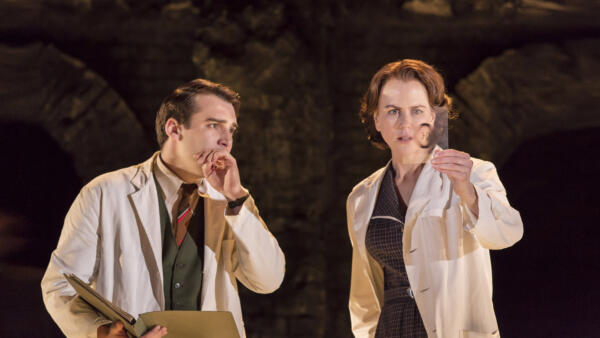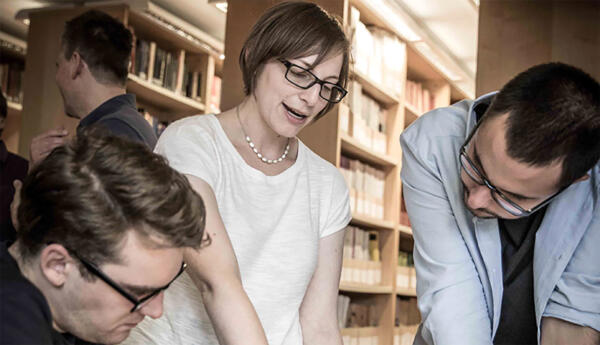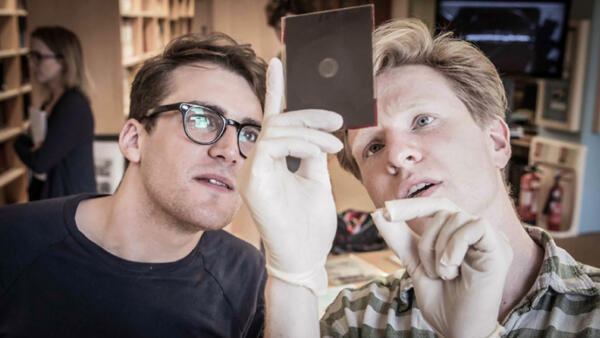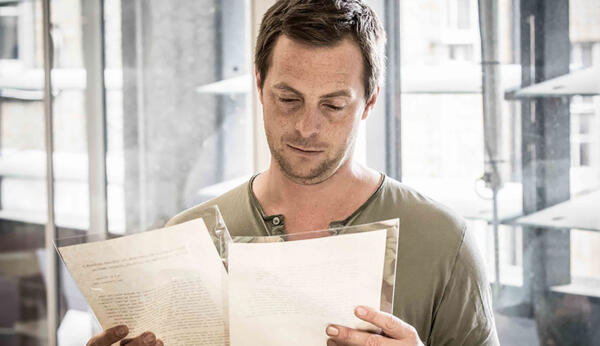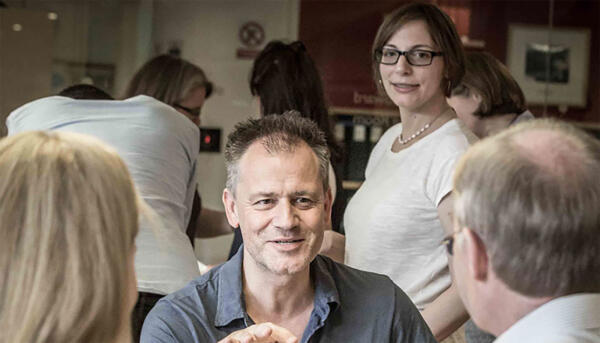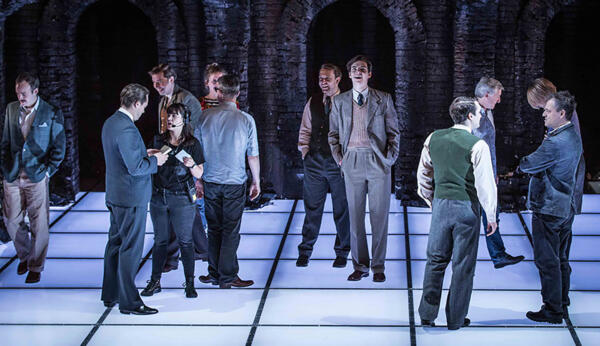Photograph 51 | Rehearsal Diary
Photograph 51– Week Five
Two Steps Away
Two thirds of the way through Photograph 51, Ray Gosling explains that Rosalind Franklin was ‘two steps away’ from the discovery of the structure of DNA. At this point in the process, we are at a similar distance – prior to technical and dress rehearsals – from the production being open to the public.
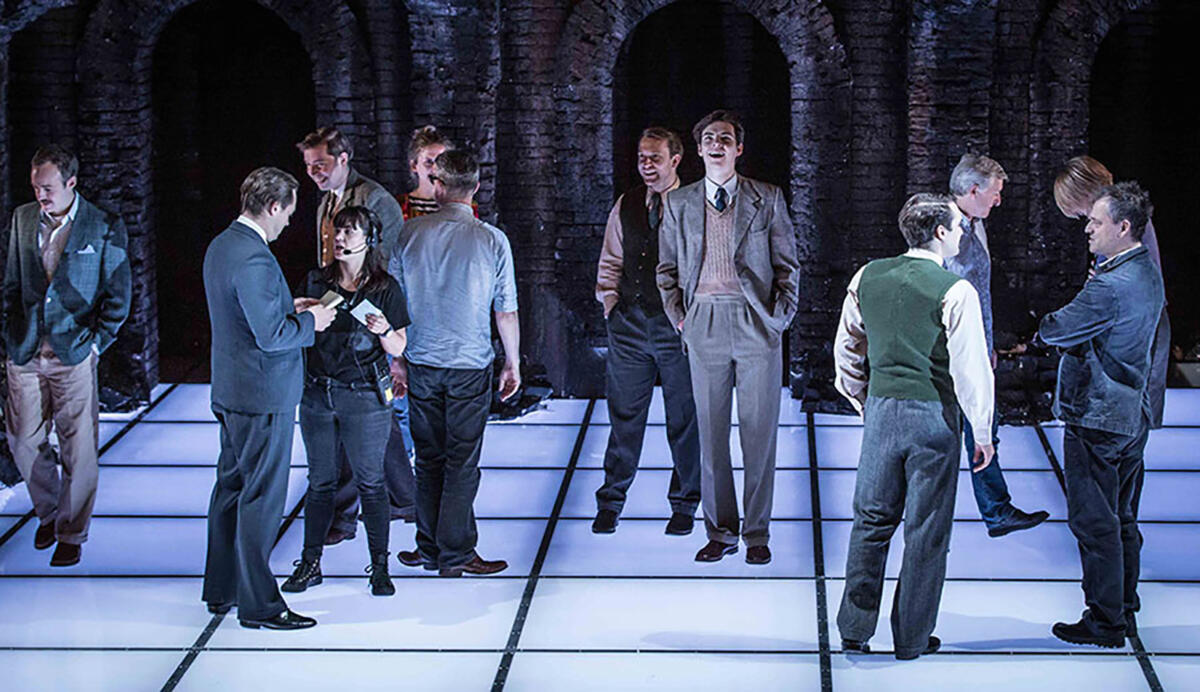
Arriving at the Noël Coward Theatre feels like moving house. We have all become accustomed to our rehearsal room environment and so to make this transition seems like a giant leap forward. Nevertheless, to say that catching a first glimpse of Christopher Oram’s set design was exciting would be an understatement.
The actors have the evening to themselves whilst Michael, Christopher and our Lighting Designer, Neil Austin, investigate the ways of illuminating the crumbling arches and towering classical façade of King’s. The following morning, the cast assembles, along with the various departments of the Production Team, and we begin our first tech session with the play’s opening.
At times, Anna’s script is akin to a memory play, in that certain scenes are fluid and bleed into one another, which offers a relentless momentum to the storytelling as we move from Paris to London to Switzerland to Cambridge. What’s fascinating is that the timeline is not always linear, with characters existing inside and outside of their historical reality, allowing us to break the fourth wall and actively invite an audience into the story. In this way, we are playing with (and sometimes for) time and, as the twin dimensions of King’s and Cambridge reference and intersect one another, the theatrical metaphor of the double helix is never very far away: as Don Caspar describes it, ‘two chains running in opposite directions, a pair of endless spirals that work together but will never meet’. I remember, during the casting process, we would ask actors for their first impressions of the play. So many of them gestured towards its scenes intersecting seamlessly from one to another, without realising that they were, in fact, subconsciously referencing the structure of DNA itself!
The technical rehearsals last only two days, which is testament to the skill and dedication of our brilliant team of creatives, who band together to synthesise the most elegant combination of lighting, sound and movement with the acting that has already been, and continues to be, developed. Following this, we perform an open dress rehearsal to around 250 students of various drama schools. It is a great opportunity for the cast to perform to a larger audience – having until now only showcased their work to those directly associated with the production – and for this to be part of a progression that will culminate in a sold-out first preview in front of 872 people.
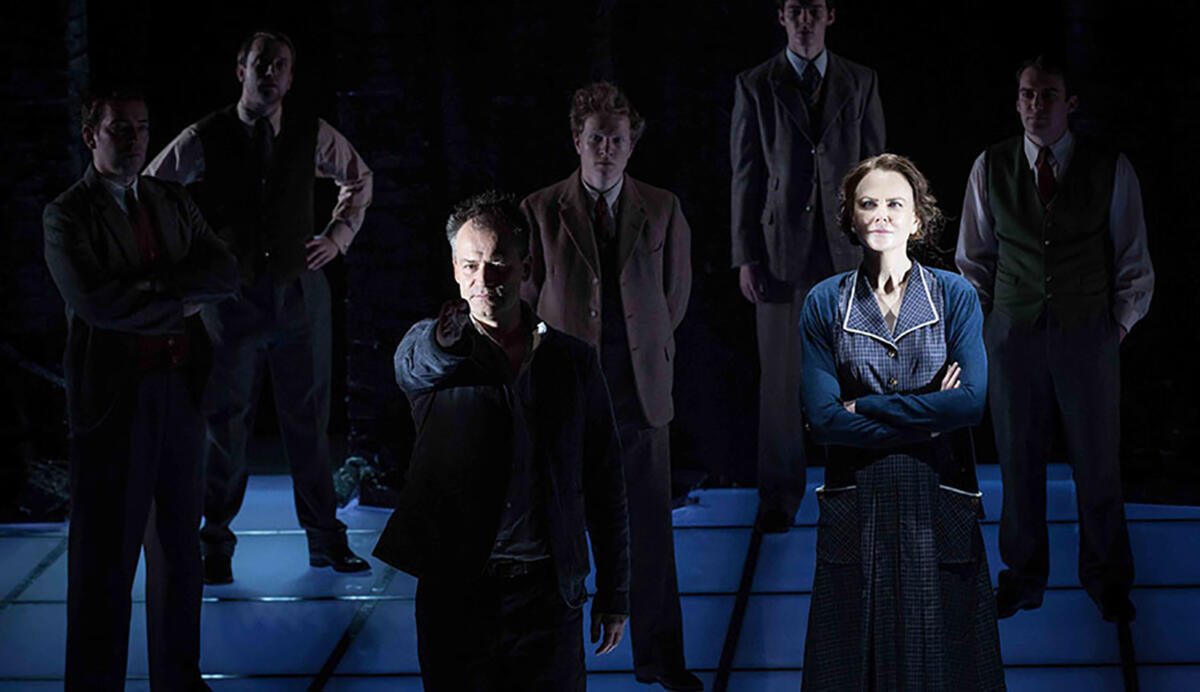
The following day, we arrive early to do some further work on certain scenes and then Michael talks to the actors before we break for dinner. That evening, the Creative Team take their seats in the auditorium and the cast perform Photograph 51 to its first paying audience. It’s heartening to see the actors take ownership of the space for the first time and immerse themselves in their characters many of whom we’ve now come to view as old friends, despite having still only spent a few weeks in their company.
The following previews will be a process of honing what works and refining what doesn’t in the same spirit of experimentation as we established in our very first week together. Although, in the words of Ray Gosling, Rosalind Franklin was only ‘two steps away’ from her solution, for us, no such thing exists. The production is never going to be ‘fixed’ or static – we work within certain parameters, but within those it’s our responsibility to maintain an absolutely direct contact with our audience and, hence, to keep the action alive in a way that’s never exactly the same from night to night. I’m convinced this is the reason why we continue to tell stories in the theatre.
